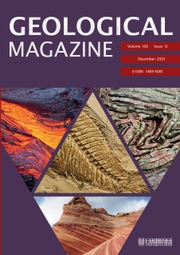Article contents
III.—On the Pre-Thanetian Erosion of the Chalk in parts of the London Basin
Published online by Cambridge University Press: 01 May 2009
Extract
It has long been recognized that, in early Eocene times, while the “Calcaire de Mons” was being deposited in the Belgian area, large tracts of the Upper Chalk were removed by denudation from the south-east of England. The true extent of the unconformity between the Chalk and our oldest Eocene strata is now to be seen only where the Eocene cover yet remains. Even where the Chalk is so covered, the unconformity must have been accentuated to some extent in consequence of the solvent action of percolating carbonated waters, the evidence of which is familiar to us as “pipes” in the Chalk filled with Eocene strata, and the persistent bed of unworn, green-coated flints (“Bull-head” Bed) which everywhere occurs between our lowest Eocenes and the Chalk; but such secondary action is likely to have been more or less uniform throughout the whole area beneath the Tertiary cover.
- Type
- Original Articles
- Information
- Copyright
- Copyright © Cambridge University Press 1918
References
page 296 note 1 The Mineral Industry, vol. xxiv, p.687,1916Google Scholar, and vol. xxv, p. 724, 1917;Mining and Scientific Press, May 27, 1916.Google Scholar
page 296 note 2 Scrivenor, loc. cit., p. 7.
page 298 note 1 In this investigation the writer has used the map of the Pre-Tertiary Chalk surface prepared by Mr.Wills, L.J.(Records of London Wells,Mem. Geol. Surv., 1913)Google Scholar and also that by ProfessorBoswell, G.H.(Q.J.G.S., vol.lxxi, pl. l).Google Scholar
page 300 note 1 Water Supply of Berkshire(Mem. Geol. Surv.),1902, pp. 95–6.Google Scholar
page 300 note 2 “Berkshire and Part of the Thames Valley”: Jub. Vol. Geol. Assoc., pt. ii,1910Google Scholar.
- 2
- Cited by


